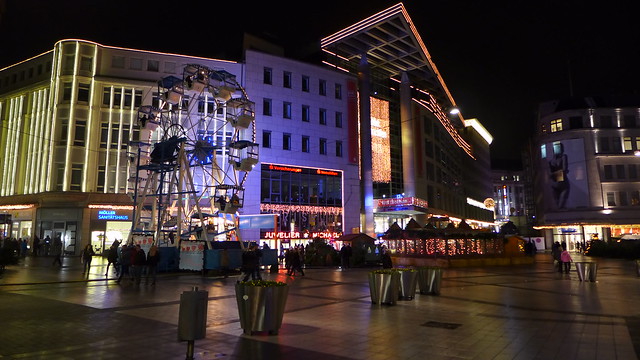
Bochum, Germany. Image by Flickr user Kostik -Ruhr.
A quick look at some of the things that happened this week in the world of cable cars, urban gondolas, and cable propelled transit:
- An urban cable car proposal has surfaced in Bochum, Germany. The current plan is to connect Ruhrpark to the downtown on a 10-15 minute journey through the city.
- More details have come out about Mexico’s first urban gondola scheme, Mexicables. The system will benefit up to 300,000 residents and will connect to the top of Sierra de Guadalupe via Ecatepec. The 4.8km cable car will have 5-7 stations, 190 cabins and reduce travel times to 17 minutes from 45 minutes. Construction is scheduled to begin in February and last 12-14 months.
- The Algiers government has awarded an urban cable car project worth 18.7 million euros to the consortium of Poma and ERBTPH Chai’bi. The system will link Bab El Oued and Zghara and is expected to be complete in 18 months.

2 Comments
Translating the key bits of the linked article about the Mexicable project [with some explanatory expansions marked with these brackets]:
The project connects Ecatepec [not Morales] [population over 1.7 million], the northeastern and largest of all the exurbs of (enormous) Mexico City, and will serve to extend Mexico Ciity’s Metro Line B from its station on the Via Morales in “the flats” of Ecatepec into the tops (or heights) of the adjacent Sierra de Guadalupe mountains, serving a population up there of over 300,000 (potentially rapidly increasing if connected to the Mexico City urban transit system).
5 or possibly 7 stations
190 cabins with capacity of 8 persons
4.8 kms length
17 minute ride replacing a current 1 hour commute
Costing “superior a los mil 228 millones de pesos” which means (roughly) “more than 93 million dollars,” and calculates out as “more than” $19.4 million dollars a kilometer, pretty closely aligned with the current world baseline ‘expected’ cost for MCP right down to that vague phrase “more than”.
The contractors are Mexican companies giant conglomerate ALFA and smaller IUSA, neither with CPT specific backgrounds.
Perhaps most importantly for readers, Eruviel Avela, recently elected Governor of the Mexican State where the project is being built (‘Estado de Mexico’], past mayor of Ecatepec, prominent member of the ruling PRI of Mexico, and Chairman of the Mexican National Federation of Municipalities (FENAMM), said [translating]:
“In Mexico gondola rides are for tourism but this will be their first use for mass transit giving a major benefit to the region, and [its success] will allow other such projects to be realized in the country. It is an innovative project, safe, effective, and liberated from topographical obstacles. ”
The Sierra de Guadalupe mountains are, by far, the largest non-urbanized area in greater Mexico City.
Thanks David!